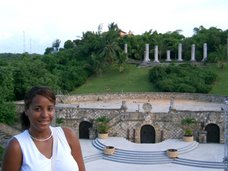Chapter 2
This chapter explored the literacies necessary to navigate the internet using strategies that help us get the most out of it. It also emphasizes the responsibilities of teachers to become familiar with navigating the Internet. It states strategies such as, querying search engines, critically evaluating multiple forms of information, weaving through search results, and systematically maneuvering within one website as important aspects to consider in order to make sense of information on the internet. Moreover, the chapter focuses on how to locate and use internet browsers to their potential so that we, as educators, are able to properly integrate Internet resources in the classroom. The key factors of effective teaching and learning with the Internet are: navigate the Internet, avoid excessive commercialism, and apply the knowledge gained to develop critical thinking. In other words, teachers learn that it is not how fast students can find information on the Internet, but about how accurate, relevant, appropriate, and useful it is.
This chapter discussed three internet browsers: Internet Explorer, Netscape Navigator and Safari, which are commonly used to locate, view and organize webpages. Learning the features of these browsers is an ongoing learning experience, one we learn from our own experiences, from other teachers, and also from our students; an important factor is to explore and to take full advantage of all the features of a browser. Another issue to take into account is the amount of advertising we want to expose our students to. This can be controlled by the way we configure the browser or even by the browser we choose to use. Managing internet browser tools for use in the classroom employs the following strategies: developing a starting page, replacing commercial links with educational links, organizing bookmarks and sharing these with others, downloading and installing plug-ins (tools to read graphics, audio, and video) and saving web pages.
Teachers could benefit by attending Internet workshops or professional developments as early as the beginning of the year. It will be a big time-saving feature because teachers could learn from the presenter and from one another. Another time-saver is to make sure the Internet is used as a resource and not taught as a subject. This is why it is important to allow time at the beginning of the year to give thorough instruction about its use, thereby eliminating repeated instruction with each activity during the year. Consequently, teachers will be better prepared to teach students early on. Moreover, teachers will be able to successfully integrate the use of Internet as an instructional tool. In turn, students will learn its proper use and will use it effectively.
In order to effectively use the resources available in the Internet, teachers will benefit from knowing ways to organize, to manage, to search, and to share resources. Some strategies listed include: designating a startup page, visiting educational links, organizing bookmarks and sharing them, saving webpages onto the computer, and downloading plug-ins if necessary. Being organized also means knowing where to locate, for example, images and audio files. However, care must be given when using particular information from a website to make sure it is not copyrighted material and if permission is needed in order to use it. Additionally, when using a keyword in a search engine a few tips can be helpful such as enclosing phrases with quotation marks, using phrases that are common among teachers, using the “topic plus keyword” strategy which helps narrow results and using electronic spelling supports for when we may misspell a word. I find these features so helpful. For example, I have a favorite site for bookmaking all the neat webpages that I find. It is called del.icio.us. I love all its features including the capability of categorizing webpages as personal, education, and more.
Child safety issues are a big concern and need to be taken into consideration. It is important to help students understand what the risks and benefits are; from learning how to find reliable information quickly and using it appropriately and utilizing or clicking the back button to leave unwanted webpages. To eliminate this last one, one can ensure to use search engines designed for them in mind. Also, the school’s Acceptable Use Policy needs to be updated regularly as well as the need to establish internet filtering rules. In addition, students should know the difference between searching and browsing, with searching being more focused, with a purpose in mind; when browsing, students tend to be sidetracked easier by things off topic. A good idea is to help them narrow down the keywords they will use to search with and then helping them to understand the information that results. I realized how import this is to ensure that students learn strategies to efficiently navigate the Internet. I have noticed that when I have taken the time to discuss the webpage, parts of an address, the purpose, accuracy and other features, students are prompted to question the sources instead of assuming that its content is accurate.
I enjoyed reading about the teacher and the methods used to ensure student safety in using the Internet. These methods engaged his students, motivating them, but at the same time he was able to teach them how to be safe while on the internet. He encouraged the sites that ensured safety. An interesting tactic that the District where he taught used was to require the students to obtain an Internet Driver’s License. In order to get this license the students were required to take several online quizzes that would evaluate their responses to different situations they would encounter, whether their responses were appropriate and safe. Only after passing these evaluations would they be given a Driver’s License with permission to use the internet.
In summary, new technologies along with search and navigational tools are always emerging. Our challenge as educators is to keep up to date with them as well as the new literacies that must be learned. Our responsibility is to teach these emerging technologies and tools to our students, helping them to become more critical and efficient in their use of the internet. An important aspect to remember is to teach our students navigational strategies at the beginning of the year that would help them in future exercises. Another tactic could be getting the students to share their experiences with the whole class; as suggested in the book. This would help them know what others felt to be advantageous practices and what pitfalls were encountered and how they could be avoided in order for others not to make the same mistakes. Also, students could work together to analyze webpages. This collaboration could help students become involved. Finally, my school would benefit from having a webpage like Caroline Joiner’s High School Library. It includes resources, safety, critical thinking, and the role of the student and the teacher when navigating the Internet.
Wednesday, February 20, 2008
Subscribe to:
Post Comments (Atom)


No comments:
Post a Comment